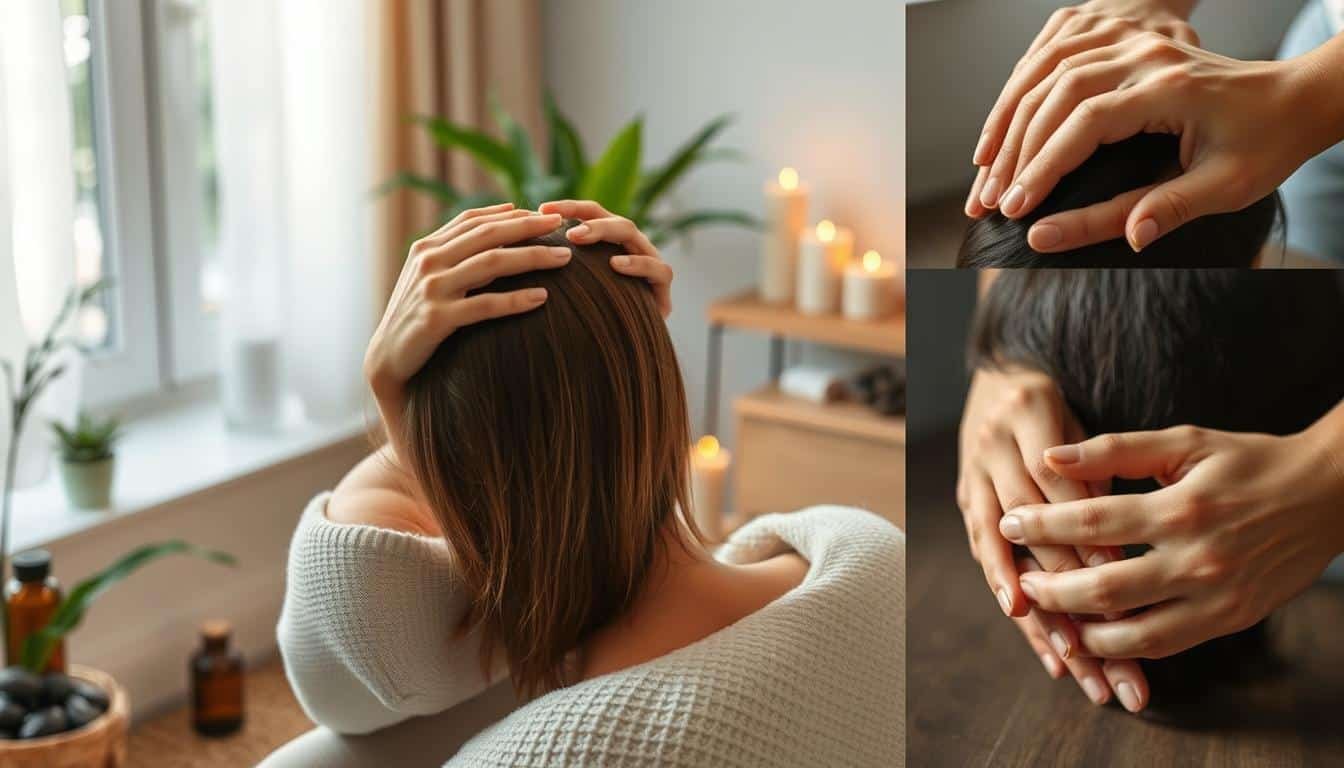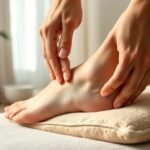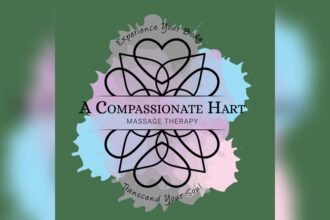Have you ever wondered why a simple head rub can feel so soothing? I’ve often thought about this, especially after feeling relaxed after a scalp massage. I’m excited to share what I’ve learned about head massage techniques.
Head massage techniques are more than just running your fingers through your hair. They involve a thoughtful approach to the scalp, neck, and face. I’ve found that these methods can reduce stress and improve circulation. As I explore different head massage techniques, I’m looking forward to learning more about this ancient practice and its modern uses.
Key Takeaways
- Head massage techniques involve gentle manipulation of the scalp, neck, and face
- Scalp massage benefits include stress reduction and improved circulation
- Various methods like circular motions and kneading are used in head massages
- Learning how to massage the head can lead to relaxation and tension relief
- Head massages may potentially stimulate hair growth
Introduction to Head Massage
Head massage is a calming practice with roots in ancient healing traditions. It’s a great way to relax and feel refreshed. Let’s dive into what head massage is, its origins, and its benefits.
Origins and Definition
Head massage techniques come from Ayurvedic medicine in India. It involves soft tissue manipulation on the head, neck, and face. The goal is to improve both physical and mental health through touch.
Scalp Massage Benefits
The benefits of head massage are many:
- Stress reduction
- Improved blood circulation
- Potential relief from tension headaches
- Lower blood pressure
- Possible promotion of hair growth
I’ve seen a drop in tension headaches with regular head massages. The calming effect on my mind and body is amazing.
Overview of Techniques
Head massage techniques vary, but common methods include:
- Circular motions across the scalp
- Gentle kneading of neck muscles
- Pressure point stimulation on temples and forehead
These techniques combine to offer a calming experience. Whether done by a pro or as self-care, head massage is a simple yet effective way to relax and improve well-being.
Preparing for a Head Massage

Getting ready for a head massage is key for a relaxing time. I’ll show you how to set up the perfect space, pick the best oils, and follow hygiene rules. These steps are important for both getting a professional massage and doing one yourself.
Creating a Relaxing Environment
Start with soft lighting and comfy seats. I like candles or dimmer lights for a calm vibe. Add some gentle music in the background. And, keep the room at a cozy temperature. Too cold or hot can mess up the massage.
Choosing the Right Oils
Picking the right head massage oils is crucial for your scalp and relaxation. Here are some top choices:
- Jojoba oil: Mimics natural scalp oils
- Sweet almond oil: Nourishes and softens hair
- Coconut oil: Promotes hair growth and moisturizes
For extra benefits, mix a few drops of essential oils like lavender or peppermint with your base oil. This mix boosts the massage’s aromatherapy.
Basic Hygiene Practices
Keep things clean for a great massage. Wash your hands well before starting. If you’re doing a self massage, make sure your hair is smooth. A warm, damp towel on your scalp opens pores and relaxes you more. These easy steps make your head massage session clean and refreshing.
Understanding Head Anatomy
To master head massage techniques, it’s key to know the head’s anatomy. The skull is the base, and the scalp and facial muscles are crucial. Let’s look at the main spots we target in a head massage.
The temples, forehead, crown, and base of the skull are key for easing tension. By focusing on these spots, we can lessen stress and help people relax. Knowing where to apply pressure is essential for targeting discomfort.
The scalp has many blood vessels, which is interesting. This network helps improve blood flow during massages. This can lead to healthier scalp and even hair growth.
| Area | Benefits | Massage Technique |
|---|---|---|
| Temples | Headache relief | Gentle circular motions |
| Forehead | Stress reduction | Sweeping strokes |
| Crown | Relaxation | Kneading movements |
| Base of Skull | Neck tension relief | Firm pressure points |
Knowing the anatomy helps me adjust my massage techniques for better results. By focusing on these areas, I can improve relaxation, reduce tension, and enhance overall well-being through targeted head massage.
Essential Head Massage Techniques
Learning head massage techniques is crucial for relaxation and relief. Knowing how to massage the head well can greatly improve the experience. Let’s look at some key methods that are the base of a great head massage.
Circular Motions
Circular motions are a key part of head massage. I start by placing my fingertips on the scalp and making small circles. This helps blood flow and is very soothing.
I move from the hairline to the back of the head. I adjust the pressure based on what the person likes.
Kneading Movements
Kneading is another good way to massage the head. I use my whole hand to squeeze and release the scalp. This helps relieve tension and relaxes the person.
I start at the base of the skull and move up to the crown. It works best this way.
Tapping and Percussion
Tapping and percussion use light, rhythmic movements on the scalp. I use my fingertips to create a drumming feel. This wakes up the scalp and boosts circulation.
I usually end with this method. It leaves a refreshing feeling.
| Technique | Benefits | Pressure Level |
|---|---|---|
| Circular Motions | Stimulates blood flow, soothes | Light to moderate |
| Kneading Movements | Relieves tension, relaxes muscles | Moderate |
| Tapping and Percussion | Invigorates, increases circulation | Light |
By mixing these techniques, I make a full and fun experience. Always talk to the person to make sure they’re comfortable and getting the most from the massage.
How to Massage the Head: Step-by-Step Guide

Learning to massage your head can be very rewarding. I’ll show you a simple self head massage tutorial you can do at home. It covers all key areas, from the neck to the scalp, for a complete and calming massage.
Starting with the Neck
Start by massaging the base of your neck. Use your thumbs and fingers to apply gentle pressure in circular motions. This helps release tension and gets you ready for the full head massage.
Moving to the Scalp
Then, move your fingers up to your scalp. Use your fingertips to make small, circular movements across your entire head. This boosts blood flow and is very relaxing. Spend about 5 minutes on your whole scalp.
Focusing on Pressure Points
Focus on key pressure points like your temples and crown. Apply gentle pressure and make slow, circular motions. This can help relieve tension and promote relaxation.
| Area | Technique | Duration |
|---|---|---|
| Neck | Circular motions with thumbs | 2-3 minutes |
| Scalp | Small circles with fingertips | 5 minutes |
| Pressure Points | Gentle pressure and slow circles | 2-3 minutes |
The secret to a great head massage is slow, gentle strokes. If you have long hair, some light hair tugging can add to the relaxation. With practice, this self head massage tutorial will become second nature. It’s a quick and easy way to relax and rejuvenate.
Incorporating Aromatherapy in Head Massages

Aromatherapy elevates head massages to a new level. Essential oils can change the game. They are powerful extracts from plants that benefit both mind and body.
Choosing the right head massage oils is key. Lavender oil is great for relaxation. Its calming scent helps reduce stress.
Peppermint oil is my choice for boosting circulation. Its cool effect gets blood flowing, making the scalp feel alive.
It’s important to use essential oils safely. I mix them with carrier oils like jojoba or sweet almond. This keeps the skin safe while still enjoying the benefits. Just a few drops on my fingers start the massage.
“The right essential oil can elevate a simple head massage into a truly transformative experience.”
Before trying new oils, I do a patch test. This prevents any allergic reactions. After checking, I add the oils to my massage routine, making it even better.
- Lavender: Promotes relaxation and better sleep
- Peppermint: Stimulates circulation and eases tension
- Rosemary: Improves mental clarity and may boost hair growth
- Eucalyptus: Clears sinuses and relieves headaches
By mixing aromatherapy with head massage, I get a complete wellness approach. The calming scents and the massage work together. They help us relax deeply and feel better overall.
Self-Massage Techniques for the Head
Learn to pamper yourself with a self head massage tutorial that combines relaxation and healing. I’ve found that mastering head massage techniques can change your daily life. Let’s look at some easy methods to add to your routine.
Using Your Fingertips
Begin your self head massage by gently pressing your fingertips against your scalp. Move in small circles, covering your entire head. Focus on tense areas like your temples or the base of your skull. This simple method can ease headaches and help you relax.
Utilizing Massage Tools
Boost your self-massage with special tools. Scalp brushes and handheld silicone massagers offer deeper stimulation. They’re great for reaching hard-to-get spots and feel different from your fingers. Try out various tools to see what suits you best.
Incorporating Breathing Exercises
Pair your head massage with deep breathing for ultimate relaxation. Massage while taking slow, deep breaths. Inhale for four, hold for four, then exhale for four. This not only boosts the massage but also calms your mind and lowers stress.
| Technique | Duration | Benefits |
|---|---|---|
| Fingertip Massage | 5-10 minutes | Relieves tension, promotes relaxation |
| Tool-assisted Massage | 3-5 minutes | Deeper stimulation, improves circulation |
| Breathing Exercise | 2-3 minutes | Reduces stress, enhances overall massage effect |
Consistency is crucial for self head massage. Aim for at least 5 minutes daily to see the full benefits. With regular practice, you’ll better understand your body’s needs and handle tension and stress through self-massage.
Professional Head Massage Services
Professional head massage services mix relaxation with health benefits. Sessions last 45 to 60 minutes. This gives therapists enough time to work their magic. The cost is around $60, making it a good deal for stress relief and better health.
Cranial-sacral therapy is a fascinating head massage technique. It involves gently moving the skull and spine. This helps to improve cerebrospinal fluid flow. It’s a gentle yet effective method.
When booking a head massage, tell the therapist about your needs. This way, the session can focus on your specific concerns. It’s great for those with chronic tension or certain health issues.
“A professional head massage is like a reset button for your mind and body. It’s an investment in your overall well-being.”
Here are some tips for a great head massage experience:
- Arrive a few minutes early to settle in and relax
- Wear comfortable clothing that allows easy access to your neck and shoulders
- Be open about any health concerns or preferences you have
- Stay hydrated before and after your session
Choosing professional head massage services is more than a luxury. It’s an investment in your health. The expert techniques and touch of a trained therapist offer relief and relaxation you can’t get alone.
Head Massage for Specific Conditions
Head massage can help with many issues. Let’s see how it can ease common problems we face every day.
Relieving Tension Headaches
For tension headaches, focusing on certain areas is crucial. Massaging the temples and the base of the skull often helps quickly. Use gentle circular motions with your fingertips to release tension.
Stimulating Hair Growth
Scalp massages might help hair grow. They improve blood flow to hair follicles, which can make hair thicker over time. Use a nourishing oil and massage it into your scalp with firm, circular motions.
Reducing Stress and Anxiety
Head massage is great for stress and anxiety. Combining gentle scalp massage with deep breathing exercises can calm your mind and body. Use slow, rhythmic movements across your scalp while breathing deeply.
| Condition | Technique | Frequency |
|---|---|---|
| Tension Headaches | Circular motions on temples and base of skull | As needed, 5-10 minutes |
| Hair Growth | Firm circular motions with oil | 2-3 times per week, 10-15 minutes |
| Stress and Anxiety | Gentle strokes combined with deep breathing | Daily, 15-20 minutes |
Consistency is important for head massage benefits. Regular practice can improve your overall well-being.
Common Mistakes to Avoid in Head Massage
Learning to massage the head comes with avoiding common mistakes. One big error is using too much pressure. Hard pressure can be uncomfortable and tense. Instead, use gentle yet firm touches to relax the scalp and muscles.
Keeping your hands clean is key in head massage techniques. Not washing your hands or using dirty tools can spread bacteria. Always make sure to clean up before starting. Also, when using essential oils, make sure to dilute them correctly. Undiluted oils can irritate the skin and cause problems.
Don’t rush a head massage. Take your time with slow, careful movements. This helps relax and relieve tension. Also, be careful of any skin issues or open wounds on the scalp. Avoid massaging those areas until they heal. By avoiding these mistakes, you’ll get the most out of your head massage.
FAQ
What are the benefits of head massage?
What techniques are used in head massage?
How can I prepare for a head massage?
What areas should be focused on during a head massage?
How can I incorporate aromatherapy into a head massage?
What are some tips for self-head massage?
What can I expect from a professional head massage service?
How can head massage help with specific conditions?
What mistakes should I avoid during head massage?
Source Links
- Head Massage Benefits for Headaches, Migraine, Stress, More – https://www.healthline.com/health/head-massage-benefits
- How to Give a Head Massage: 12 Steps (with Pictures) – wikiHow – https://www.wikihow.com/Give-a-Head-Massage
- Massage Therapist’s Guide To Face & Scalp Massage – https://carrington.edu/blog/massage-therapists-guide-to-face-scalp-massage/













4 Comments
Isnt it wild how a simple head massage can increase blood flow and reduce stress? Ancient techniques still rocking in modern times!
Interesting read! Has anyone tried these techniques and noticed a difference in their stress levels or overall well-being?
Interesting article! But arent there any risks or negative side effects to head massages? Everything has pros and cons, right?
Sure, everything has pros and cons. But lets not fearmonger about a simple head massage!